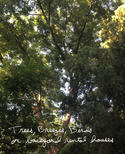Recently a follower sent me an interesting e-mail. He said he recently re-read The Organization Man by William Whyte, originally published in 1956. The suburban Chicago village of Park Forest, IL, about 30 miles directly south of the Loop, figured prominently in the book, as an example of the kind of Levittown-style suburban development that was taking America by storm at the time. In checking in about Park Forest today, he found that yesterday’s model of white middle class and middle management homogeneity is now a black-majority community. read more »
Suburbs
Ten Years After Lehman Collapsed, We’re Still Screwed
The collapse of Lehman Brothers 10 years ago today began the financial crisis that crippled and even killed for some the American dream as we had known it. Donald Trump might be starting to change that, at least for Americans who aren’t determined to remain in our bluest and priciest cities. read more »
- Login to post comments
The Battle for Houston
Over the last half-century, Houston has developed an alternative model of urbanism. As the New Urbanist punditry mounts an assault on both suburban growth and single-family homes, Houston has embraced a light regulatory approach that reflects market forces more than ideology. But last year’s Hurricane Harvey floods severely tested the Houston model. read more »
- Login to post comments
The Evolving Urban Form: Lisbon
Lisbon, Portugal’s capital is located on the wide estuary of the Tagus River, with a bridge modeled after San Francisco’s Golden Gate Bridge connecting the core city to the suburbs to the south. Lisbon also resembles San Francisco in being picturesque, with the urbanization mixed with the complex geography of the coastal waters, dominated by hills. read more »
- Login to post comments
Columbus, Ohio’s Structural Advantages
The Chicago Council on Global Affairs is hiring a research associate for their global cities program. If interested, check out the listing.
In 2009 I posted an article that proclaimed Columbus, Ohio “the new Midwestern star,” a prediction which proved prescient. I won’t go too much into performance right now as I’m planning an article on the subject, but just as one quick stat, Columbus has been the fastest growing major Midwest metro in population since 2010 at 9.0%, with a bit of a gap to the #2 performer Minneapolis at 7.3%. read more »
- Login to post comments
Jonathan Gold’s Los Angeles
The passing this week of Jonathan Gold, Los Angeles’s Pulitzer Prize-winning restaurant critic, reminded us of why we have lived in Southern California for more than four decades. When we arrived in L.A. in the 1970s—from New York and Montreal, respectively—the city was known largely for glitter and celebrities but little else. read more »
- Login to post comments
Iowa’s Next Election: Bridging the Urban-Rural and Class Divide
My home state of Iowa famously gave Barack Obama a convincing victory in the Democratic caucuses in 2008, the first triumph that launched a young U.S. senator from Illinois to become the first African-American president. Obama ultimately won two terms, and each time Iowans favored him by considerable margins. Iowa was also one of several Midwestern states that famously flipped to support Donald Trump in 2016. read more »
- Login to post comments
Welcome To Ashburn (via WBEZ)
Some recent pieces I wrote about segregation in the past few weeks got me thinking of how to express a particular feature of segregation I've witnessed in the Rust Belt, what one might call "diversity without integration", plays out in some cities. read more »
- Login to post comments
Backyard Rental House Zoning Threatens Trees, Breezes, Birds and Neighborhoods
The Dallas city manager and housing director are proposing a devastating blanket zoning change: allowing ADUs (additional dwelling units), better known as backyard rental houses, in single-family zoned neighborhoods. This change would allow a 44-foot wide by 30-foot tall rental house to be built on the back of a standard 50‑foot wide by 150-foot deep lot. Backyard rental houses would deforest the older neighborhoods, undermine neighborhood stability, accelerate gentrification, reduce diversity of housing, and diminish attainably priced opportunities for homebuyers. read more »
- Login to post comments
Pervasive Suburbanization: The 2017 Data
The most recent Census Bureau population estimates have made it clear that migration to the suburbs and away from urban cores has accelerated dramatically since the early years of the Great Recession (see here and here). read more »
- Login to post comments





















